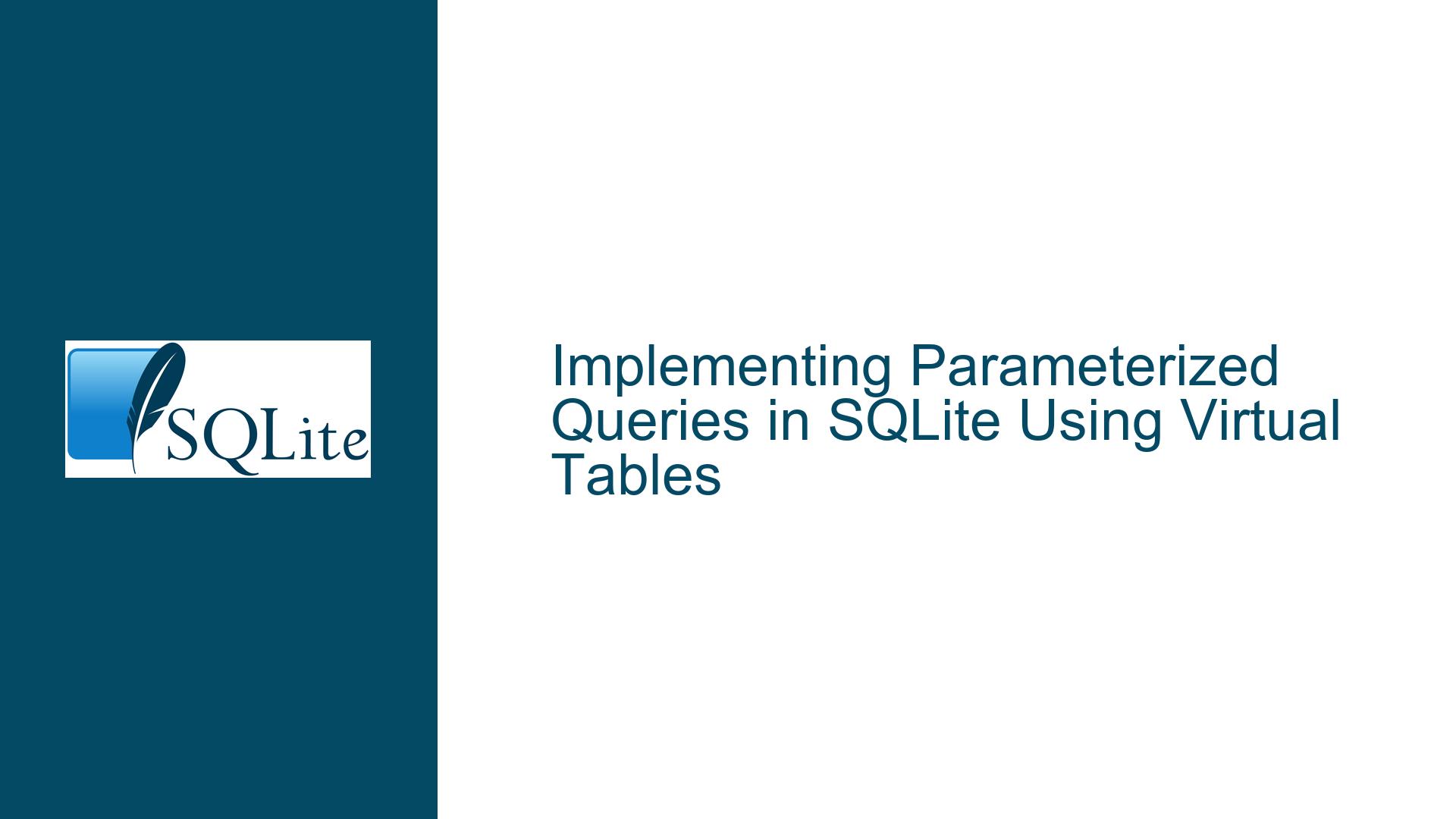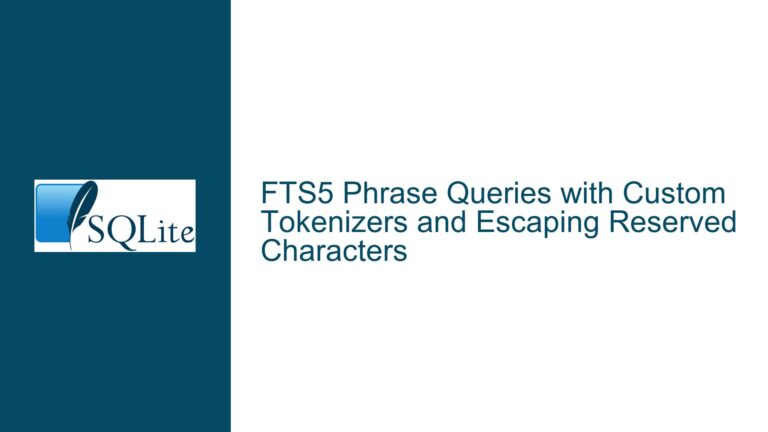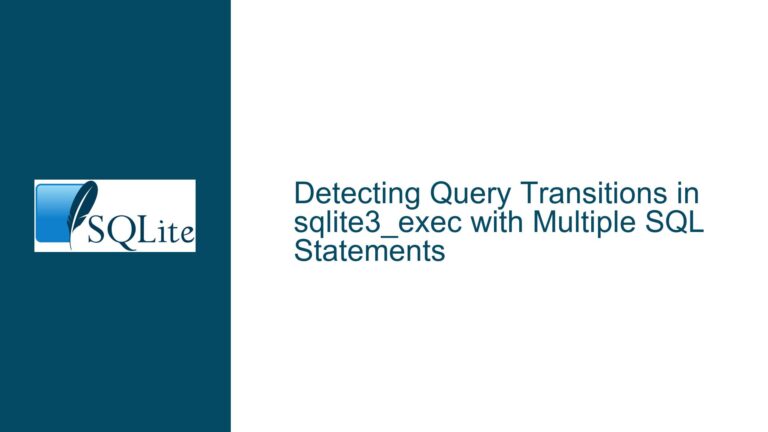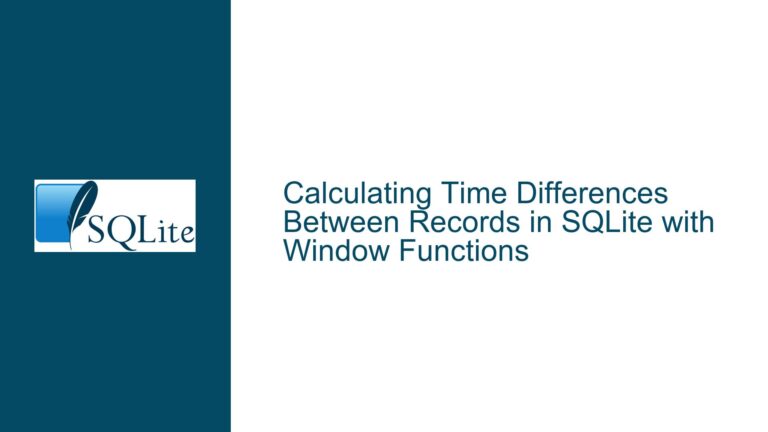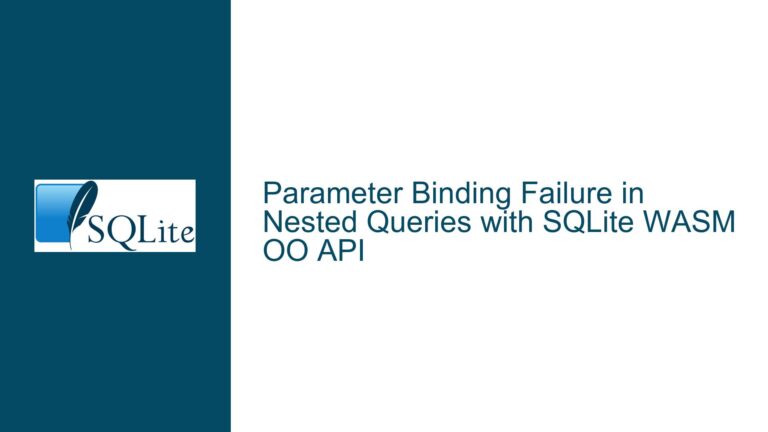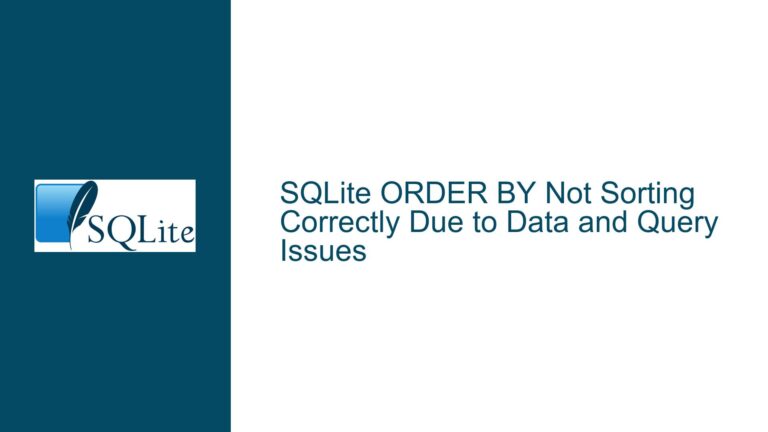Implementing Parameterized Queries in SQLite Using Virtual Tables
Parameterized Views and Table-Valued Syntax in SQLite
SQLite is a powerful, lightweight database engine that is widely used in applications ranging from embedded systems to web browsers. One of its strengths is its flexibility, allowing developers to implement custom solutions for specific needs. However, SQLite does not natively support parameterized views or table-valued functions, which can be a limitation for certain use cases. This post explores the challenges of implementing parameterized queries in SQLite and presents a solution using virtual tables.
The core issue revolves around the desire to create views that accept parameters, allowing for dynamic filtering of data. For example, a developer might want to create a view that filters records based on a date range, where the start and end dates are provided as parameters. While SQLite does not support this directly, it is possible to achieve similar functionality using virtual tables.
The proposed solution involves creating a meta-module that scans a table containing parameterized queries and dynamically creates eponymous-only virtual tables. Each virtual table corresponds to a row in the meta-table, with the table name matching the first column and the query schema derived from the second column. This approach allows for the use of table-valued syntax to pass parameters to the queries, effectively simulating parameterized views.
However, this solution is not without its challenges. SQLite caches virtual tables after their first use, which means that changes to the underlying queries may not be immediately reflected. Additionally, inserting or deleting rows from the meta-table requires additional synchronization operations, and in some cases, reopening the database may be necessary to see the changes.
Challenges with Virtual Table Caching and Schema Changes
One of the primary challenges with the proposed solution is SQLite’s caching mechanism for virtual tables. When a virtual table is first accessed, SQLite caches its schema and other metadata. This caching improves performance by reducing the overhead of repeatedly parsing and preparing the virtual table’s schema. However, it also means that changes to the underlying query or schema are not immediately reflected in subsequent queries.
For example, if a developer modifies the query associated with a virtual table, the changes will not be visible until the virtual table is recreated or the database is reopened. This limitation can be particularly problematic in scenarios where the queries need to be dynamically updated based on user input or other runtime conditions.
Another challenge is related to schema changes. When a virtual table is created, its schema is derived from the underlying query. If the query is modified in a way that changes the schema (e.g., adding or removing columns), the virtual table must be recreated to reflect these changes. This process can be cumbersome, especially in a production environment where database downtime may not be feasible.
To mitigate these challenges, developers can implement a mechanism to force the recreation of virtual tables when changes are detected. This might involve tracking changes to the meta-table and using the sqlite3_drop_modules API to drop and recreate the virtual tables as needed. Alternatively, developers can opt to reopen the database, which will clear the cache and force SQLite to recreate the virtual tables with the updated schema.
Implementing PRAGMA journal_mode and Database Reopening Strategies
To address the challenges of virtual table caching and schema changes, developers can leverage SQLite’s PRAGMA journal_mode and implement strategies for reopening the database. The PRAGMA journal_mode directive controls how SQLite handles transaction logging, which can impact the performance and reliability of the database, especially in scenarios involving frequent schema changes.
Setting the journal_mode to WAL (Write-Ahead Logging) can improve concurrency and reduce the likelihood of database corruption during write operations. However, it is important to note that WAL mode does not directly address the issue of virtual table caching. Instead, it provides a more robust foundation for implementing strategies that involve frequent database reopening.
Reopening the database is a straightforward way to clear the virtual table cache and ensure that changes to the underlying queries are immediately reflected. However, this approach can be inefficient, especially in applications with high query throughput or strict performance requirements. To minimize the impact of database reopening, developers can implement a hybrid approach that combines selective virtual table recreation with periodic database reopening.
For example, developers can track changes to the meta-table and only recreate the affected virtual tables, rather than reopening the entire database. This approach requires careful management of the virtual table lifecycle, including the use of the sqlite3_drop_modules API to drop virtual tables that are no longer needed. Additionally, developers can implement a background process that periodically reopens the database to ensure that any lingering cache issues are resolved.
In conclusion, while SQLite does not natively support parameterized views or table-valued functions, it is possible to achieve similar functionality using virtual tables. The key challenges revolve around virtual table caching and schema changes, which can be mitigated through careful implementation of PRAGMA journal_mode and database reopening strategies. By understanding these challenges and implementing the appropriate solutions, developers can leverage SQLite’s flexibility to create dynamic, parameterized queries that meet their specific needs.
